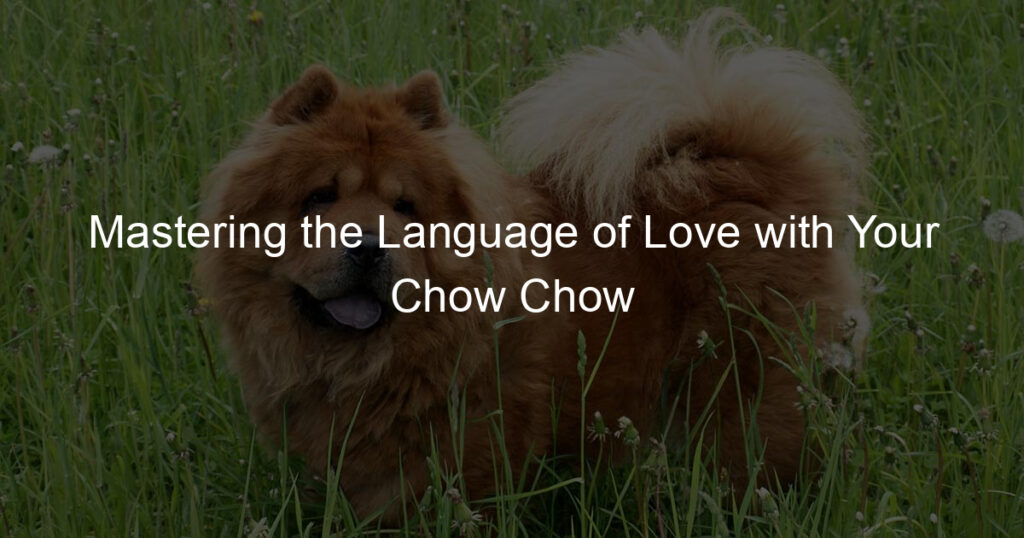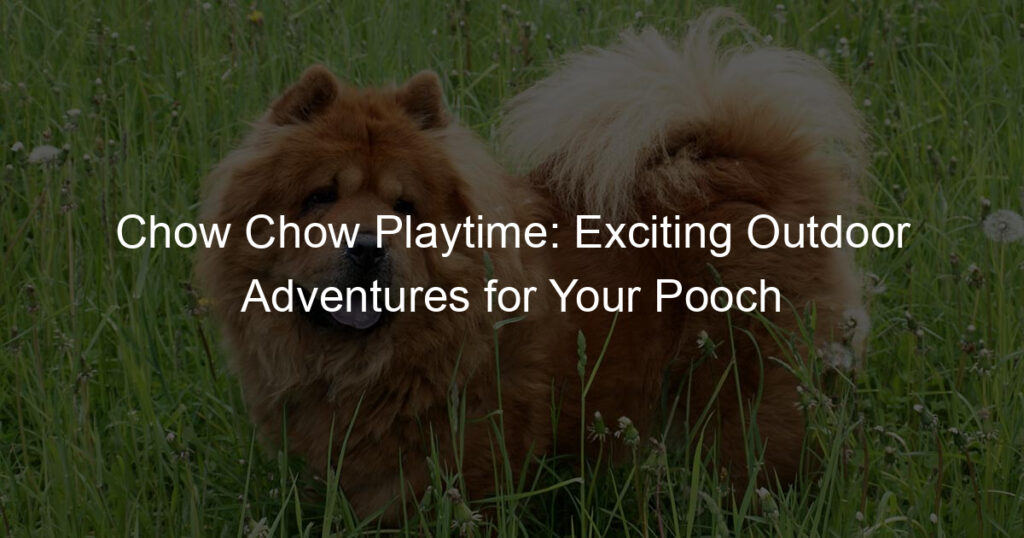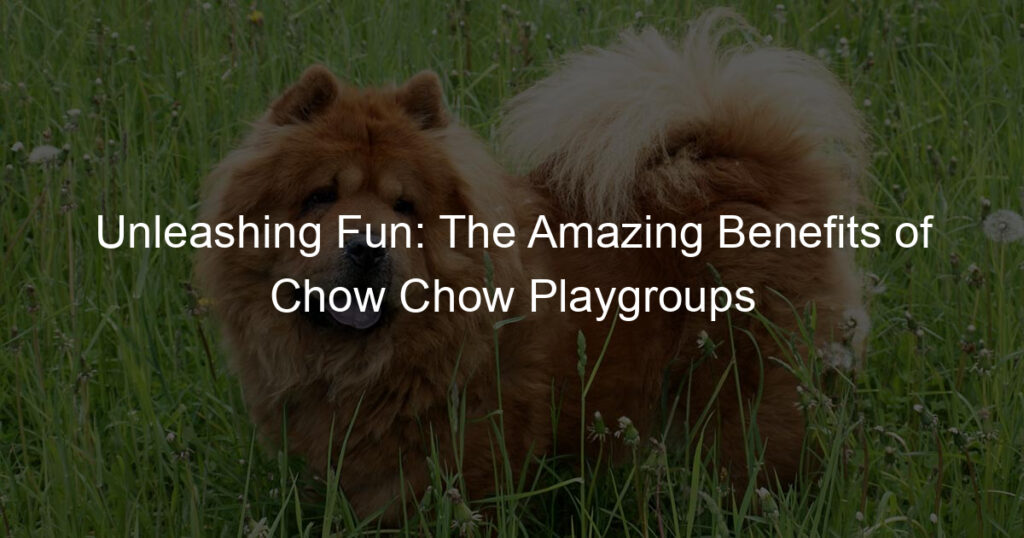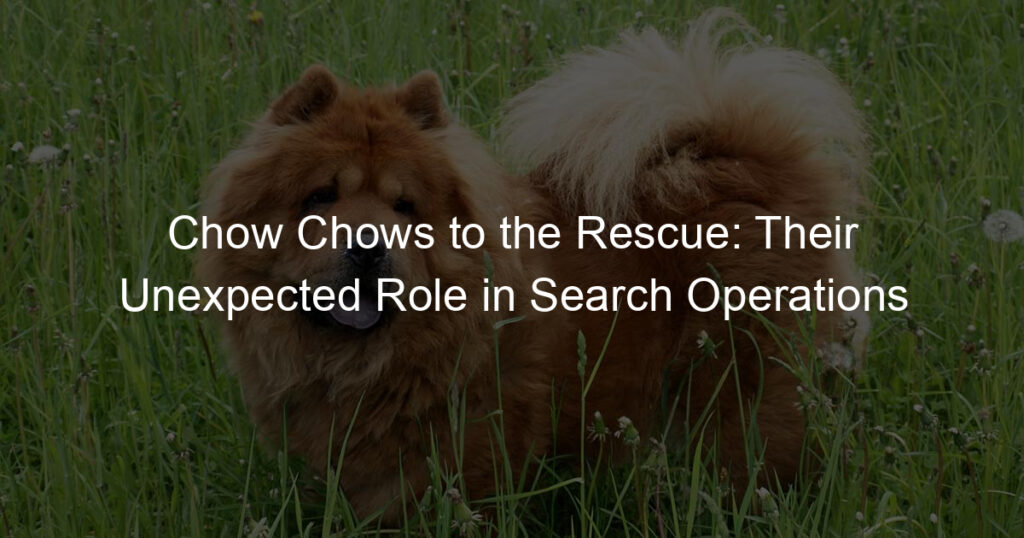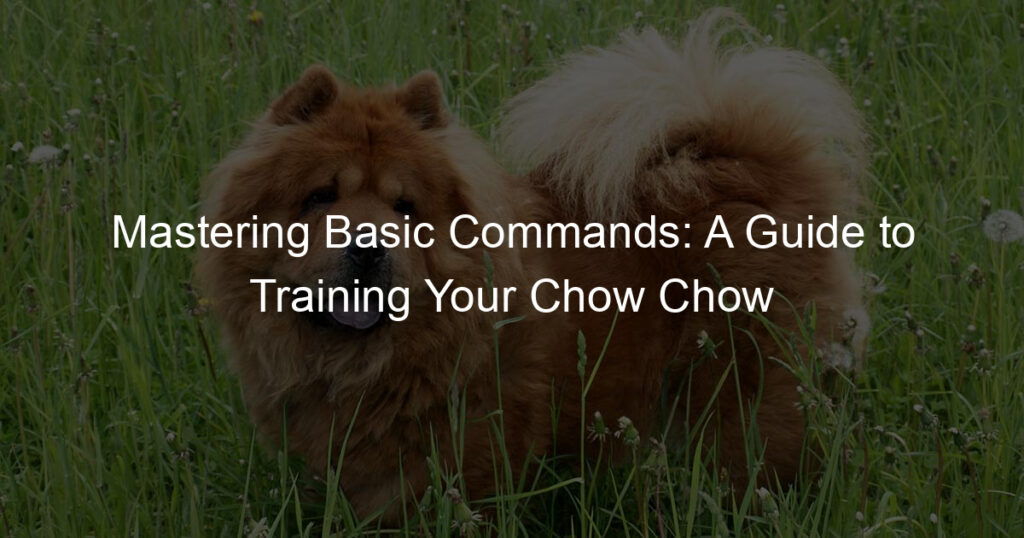
Introduction to Chow Chow Communication
Communication is a fundamental part of any relationship, and this includes the bond we share with our pets. Understanding how your pet communicates can greatly enhance your relationship with them, making it more fulfilling for both of you. This is especially true for Chow Chows, a breed known for their unique language and communication style.
Communication with pets is crucial for a variety of reasons. It helps us understand their needs, wants, and feelings. This understanding can lead to a happier and healthier pet, as well as a stronger bond between pet and owner. For instance, if your Chow Chow is feeling unwell, they may communicate this through changes in their behavior. By recognizing these changes, you can address any health issues promptly.
Chow Chows have a unique way of communicating, which sets them apart from other breeds. They use a combination of vocal sounds, body language, and facial expressions to express their feelings and intentions. For example, a Chow Chow might wag its tail to show happiness, or growl to express discomfort. Understanding this unique language can greatly enhance your relationship with your Chow Chow, making it more rewarding for both of you.
As we delve deeper into the world of Chow Chow communication, we will explore the nuances of their behavior and how you can effectively train your Chow Chow. This will not only help you understand your pet better but also allow you to communicate with them more effectively.
Understanding Chow Chow Behavior
Chow Chows are a unique breed of dogs known for their lion-like appearance and aloof demeanor. Understanding their behavior can be a fascinating journey, as they communicate in ways that are often different from other breeds. In this section, we will delve into the world of Chow Chow signals and body language.
Decoding Chow Chow Signals
Chow Chows, like all dogs, use a variety of signals to communicate their feelings and intentions. These signals can be subtle or overt, and understanding them can greatly enhance your relationship with your pet.
-
- Recognizing common Chow Chow signals
Chow Chows are known for their reserved nature. They often express their feelings through subtle signals. For instance, a relaxed Chow Chow will have its tail down and ears perked up. On the other hand, a Chow Chow that feels threatened may raise its tail and flatten its ears against its head. Other common signals include wagging their tail when happy, yawning when stressed, and licking their lips when anxious.
-
- Interpreting Chow Chow body language
Chow Chows communicate a lot through their body language. A Chow Chow standing tall with its chest out is displaying confidence, while one that is crouching or has its tail between its legs is showing submission or fear. When a Chow Chow turns its back to you, it’s not being rude; instead, it’s showing trust by exposing its vulnerable side. A Chow Chow that stares at you intently is trying to get your attention or may be challenging you.
Understanding your Chow Chow’s signals and body language is key to building a strong and loving relationship. Remember, every Chow Chow is unique, so take your time to learn and understand your pet’s specific communication style.
Chow Chow Interaction with Humans and Other Pets
Chow Chows are unique dogs with a distinct personality and social nature. Understanding their behavior can help foster a harmonious relationship with humans and other pets. Let’s dive deeper into the social nature of Chow Chows and their interaction cues.
-
- Understanding the Social Nature of Chow Chows
Chow Chows are often perceived as aloof and independent dogs. However, they are known for their loyalty and deep affection towards their family. They are not overly social dogs, but they can form strong bonds with their human family members. They are usually reserved with strangers and can be protective of their family and territory.
Chow Chows may not be the best choice for a home with multiple pets, especially if they are not socialized properly from a young age. However, with proper training and socialization, they can learn to coexist peacefully with other pets.
-
- Chow Chow Interaction Cues with Humans and Other Pets
Chow Chows communicate their feelings and intentions through various cues. They use their body language, facial expressions, and vocalizations to communicate with humans and other pets.
For instance, a relaxed Chow Chow may have a loose body, wagging tail, and relaxed ears. On the other hand, a Chow Chow that feels threatened or anxious may show signs like a stiff body, raised hackles, and a low growl.
Understanding these cues can help you better communicate with your Chow Chow and ensure a peaceful coexistence with other pets. Always remember to respect their space and boundaries, and never force interaction, especially if they seem uncomfortable.
In conclusion, understanding the social nature of Chow Chows and their interaction cues can help foster a harmonious relationship with these unique and affectionate dogs. With patience, understanding, and proper training, Chow Chows can make wonderful companions for the right family.
Training Your Chow Chow
Training a Chow Chow is a rewarding experience that can enhance the bond between you and your furry friend. However, it requires patience and understanding. In this section, we will explore effective communication strategies and training techniques for your Chow Chow.
Establishing Effective Communication with Your Chow Chow
Communication is the cornerstone of any successful training. It is crucial to understand your Chow Chow’s unique language and respond accordingly. Here are some techniques and tips to help you communicate effectively with your Chow Chow.
-
- Training techniques for Chow Chows
Chow Chows are intelligent dogs that respond well to positive reinforcement. Here are some techniques:
-
-
- Consistency: Be consistent with your commands and rewards. This helps your Chow Chow understand what is expected of them.
- Positive Reinforcement: Reward your Chow Chow immediately after they perform the desired behavior. This could be a treat, praise, or a favorite toy.
- Patient Training: Training should be a gradual process. Start with simple commands and gradually move to more complex ones.
- Chow Chow communication tips for effective training
-
Understanding your Chow Chow’s communication style can make training more effective. Here are some tips:
-
- Understand Body Language: Pay attention to your Chow Chow’s body language. A wagging tail, a relaxed posture, or a playful bounce can indicate they are happy and receptive to training.
- Use Clear Commands: Use clear, concise commands. Avoid using multiple words for the same command.
- Positive Tone: Use a positive, encouraging tone when giving commands. This helps your Chow Chow associate training with positive experiences.
Remember, every Chow Chow is unique. What works for one may not work for another. The key is to be patient, consistent, and positive. Happy training!
Case Study: Successful Chow Chow Training
Let’s delve into a real-life example of successful Chow Chow training. This case study will provide practical insights and key takeaways that can be applied to your own training efforts.
-
- Exploring a real-life example of successful Chow Chow training
Meet Bella, a two-year-old Chow Chow who was known for her stubbornness and independent nature. Bella’s owner, Mr. Smith, faced a lot of challenges in training her. However, with patience, consistency, and the right techniques, Bella turned into a well-behaved and obedient pet.
Mr. Smith started with basic commands like ‘sit’, ‘stay’, and ‘come’. He used positive reinforcement techniques, rewarding Bella with treats and praises whenever she followed the commands. Gradually, Bella started responding to the commands even without the treats. Mr. Smith also ensured to socialize Bella with other dogs and people, which helped in improving her behavior.
-
- Key takeaways from the case study
From Bella’s training journey, we can glean some important lessons:
-
- Patience is key: Training a Chow Chow requires a lot of patience. They are known for their stubbornness, but with consistent efforts, they can be trained effectively.
- Positive reinforcement works: Using rewards and praises as a form of positive reinforcement can motivate your Chow Chow to follow the commands.
- Socialization is important: Socializing your Chow Chow with other dogs and people can help in improving their behavior and making them more friendly.
In conclusion, training a Chow Chow can be a challenging task, but with the right approach and techniques, it is definitely achievable. The key is to be patient, consistent, and positive in your training efforts.
Mastering the Language of Love with Your Chow Chow
As a Chow Chow owner, you’ve probably wondered how to communicate more effectively with your pet. Understanding your Chow Chow’s language is not just about issuing commands; it’s about building a strong bond of love and trust. Let’s explore how you can master this unique language.
Building a Strong Bond through Understanding Chow Chow Language
Understanding your Chow Chow’s language can significantly strengthen the bond between you and your furry friend. Here’s how:
-
- How understanding Chow Chow language can strengthen your bond
Chow Chows communicate through a variety of signals, including body language, vocalizations, and even facial expressions. By learning to interpret these signals, you can understand your pet’s needs and emotions better. This understanding can lead to a deeper bond, as your Chow Chow will feel understood and cared for. For example, a wagging tail usually indicates happiness, while a lowered head might suggest submission or fear.
-
- Examples of expressing love and affection in Chow Chow language
Chow Chows express love and affection in unique ways. They might nudge you with their nose, lean against you, or even lick your face. These are all signs of affection in the Chow Chow language. Responding to these signals with a gentle pat or a kind word can show your pet that you understand and reciprocate their feelings.
Mastering the language of love with your Chow Chow may take time and patience, but the rewards are well worth the effort. As you learn to understand your pet’s unique language, you’ll find that your bond with them grows stronger and more meaningful.
Conclusion: The Joy of Communicating with Your Chow Chow
As we reach the end of our journey, it’s time to reflect on the joy and fulfillment that comes from effectively communicating with your Chow Chow. This isn’t just about giving commands or getting your dog to behave. It’s about building a bond of mutual understanding and respect, a bond that can only be formed when you take the time to truly understand your Chow Chow’s unique language.
-
- Reflecting on the journey of mastering Chow Chow communication
Mastering Chow Chow communication isn’t a destination, but a journey. It’s about learning to understand your dog’s unique signals and cues, and responding in a way that makes them feel understood and loved. It’s about the joy of seeing your dog’s eyes light up when they realize you understand what they’re trying to say. It’s about the satisfaction of knowing you’re doing everything you can to make your Chow Chow’s life as happy and fulfilling as possible.
-
- Encouragement for continued learning and communication with your Chow Chow
But the journey doesn’t end here. Just like humans, dogs continue to grow and change throughout their lives. Your Chow Chow will continue to develop new ways of communicating, and it’s up to you to keep learning and adapting. So keep observing, keep learning, and most importantly, keep communicating. Your Chow Chow will thank you for it.
In conclusion, communicating with your Chow Chow is a rewarding experience that strengthens the bond between you and your pet. It’s a journey filled with joy, love, and mutual understanding. So keep learning, keep communicating, and enjoy the wonderful journey of being a Chow Chow owner.

